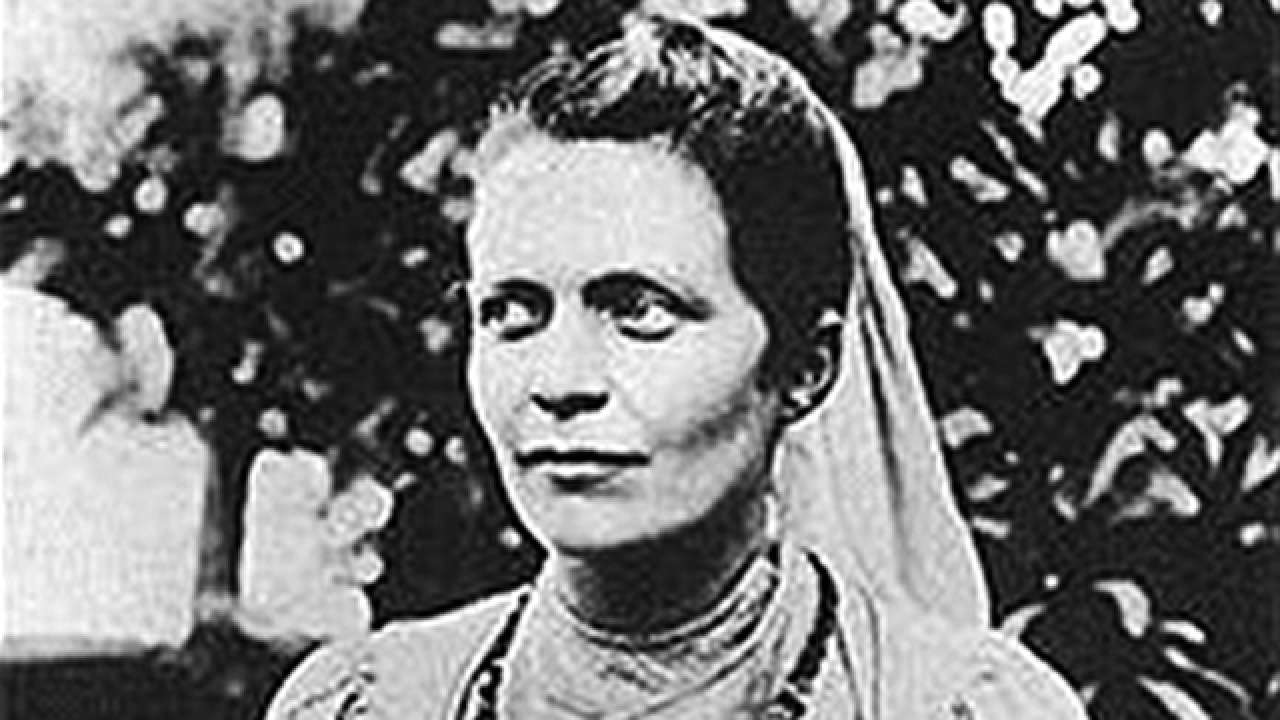
Swami Vivekananda asked for a hundred young men, sincere to the backbone, for transforming India. However, in many ways, it was Margaret Noble, a woman from Ireland, who tirelessly worked to make many of his cherished dreams a reality. When India is still negotiating the challenges of modernity, Sister Nivedita shows us that tradition and modernity need not be opposing forces, eternally locked in a conflict for man’s soul. Rather, the cultural matrix can inspire and power the engines of progress and sustainable development.
It was a chance meeting in London with Swami Vivekananda that transformed Margaret Noble into Sister Nivedita. Her admiration of his personality eventually turned into a deep reverence for Vedanta. The Vedantic understanding transformed into love and dedication to Bharat as a civilisation, and translated into an abiding commitment to serve her people and ensure their national uplift. To dedicate her life to this mission, she relocated to Calcutta and got initiated as a Brahmacharini by Swami Vivekananda. He gave her the name ‘Nivedita’, the dedicated one, and blessed her, saying “Be thou to India’s future son/Mistress, servant, friend in one”.
True to her master’s spirit, she lived and breathed India. Unlike some, her service had no hidden agenda. It was utterly dedicated to India’s regeneration and civilisational revival in three broad dimensions. The first was an intellectual renaissance in all fields of knowledge, which would make India the intellectual capital of the world. The second was ‘man-making’ focussing on both individual and social uplift. The third dimension focussed on nation-building, to create an independent Indian nation that would be the living embodiment of our highest civilisational ideals.
To create an Indic intellectual renaissance, Nivedita actively collaborated with luminaries in all fields of knowledge. In History, she argued for a clear understanding of the Indian past to create a sense of positive pride in one’s roots. In music and art, she encouraged the development of a uniquely Indian aesthetic, drawing upon classical motifs. In Science, she actively supported the pursuits of Jagadish Chandra Bose, who conclusively proved that plants have life. In her own writings, she brought out a deep and sensitive understanding of India’s culture, heritage and society.
Vivekananda’s vision of Daridra Narayana Seva — perceiving divinity in the poor and considering their uplift as the highest worship, found perfect expression in Nivedita’s life. A strong advocate of women’s education, she set up one of modern India’s first women’s schools in the orthodox part of Calcutta with the vision of shaping modern day “Maitreyis” and “Gàrgis”. For her “education is to draw out and develop the knowledge and skill which tradition has handed down, and the aptitudes acquired by the child.”. Her school, attended by young girls, married women and even widows, taught a blend of Indian classics, handicrafts to earn a living and modern education including English. There was a strong nationalist flavour to her school. When Vande Mataram was banned, it became their morning prayer. Students would listen to speeches of freedom fighters and celebrate their release from imprisonment. When the plague struck Calcutta, she rallied the people, working tirelessly to nurse the sick and clean the streets. Thousands were saved due to her efforts. As Tagore said, she was indeed Lokmata, a mother to the people.
When the cruelty of British rule became evident, Sister Nivedita actively collaborated with Indian revolutionaries in demanding complete independence and fostering a strong sense of Indian nationalism. The partition of Bengal was a turning point in the freedom struggle as it brought the hidden embers of revolutionary fervour out into full-fledged resistance. Sister Nivedita wholeheartedly supported the Swadeshi Movement calling it a national tapasya. She played a crucial role using her British contacts to warn revolutionaries in advance about arrests and repressive measures. Further, she helped shield wanted revolutionaries from the British Police. As early as 1904, Nivedita designed the first prototype of the Indian national flag with the vajra in the centre, a symbol of the power of sacrifice, as it was made when sage Dadhichi willingly gave his very bones for a greater cause. On either side, Vande Mataram was embroidered. Her book Kali the Mother, inspired the first painting of Bharat Mata by Abanindranath Tagore.
By immersing herself into the soul of India, Sister Nivedita became more Indian than many born in our land. By offering her entire life’s energy to India’s civilisational reawakening and renaissance, she took forward the dream of Swami Vivekananda, who prophesied the rise of India as Vishwa Guru, the intellectual capital of the world. By inspiring progress along civilisational lines, she showed us a path to transcend the false binary of tradition and modernity. Till the very end, in dedication to her Guru, she would sign herself as “Nivedita of Ramakrishna-Vivekananda”. A century after her demise, her life shines as one of the luminous stars that show us the eternal spirit of India. The dream of Bharat becoming the intellectual capital of the world will become a reality when we awaken this light in each one of us.
The author is a Research Associate at Vision India Foundation